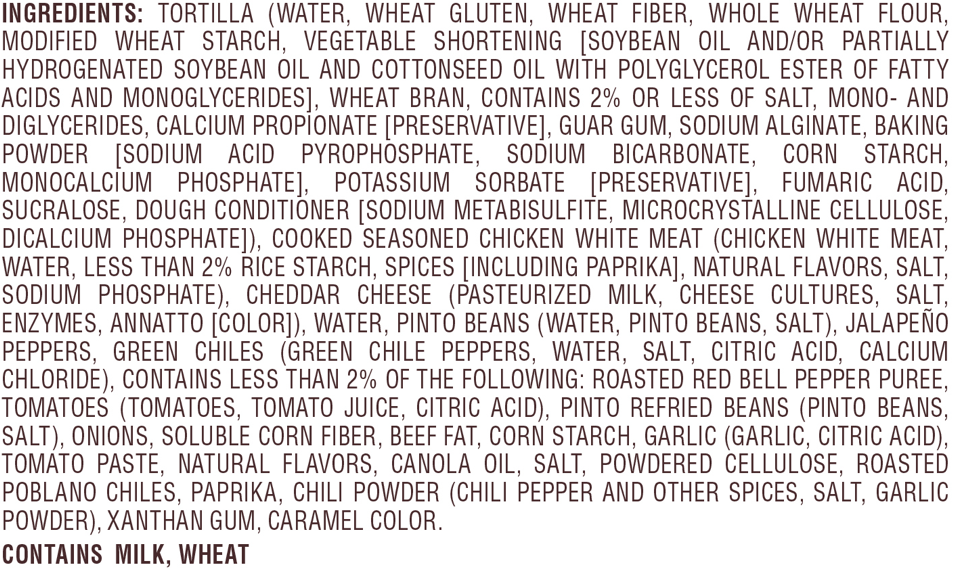Day 3 - What’s the difference between Paleo, Primal and Keto?
Interesting question.
I’ll spend a few minutes talking about what I understand the differences to be, but the approach that I’m going to suggest for the next 21 days is what I call the OG Diet – Original Grocer. Think about what people ate before there were grocery stores. Meat, eggs, fish, maybe they had a garden so they had some vegetables, fruit when it was in season. That’s what I’m suggesting. Sure you can add some cheese and plain yogurt, but focus on real food and we’re going to pass on the grains.
Paleo, Primal and some versions of Keto approach food through an evolutionary lens.
They are frequently referred to as ancestral ways of eating.
Not because they necessarily want to celebrate the Paleolithic times but more as a way to understand why certain foods seem to adversely affect people more than others.
Evolution is based on the premise of surviving long enough to successfully pass on your genetic material to your offspring.
Getting eaten prior to accomplishing that means you lose.
If you’re a hippopotamus and someone or something decides that you’d make a great addition to the menu, biting them in half is an effective way of thwarting their plans.
When you’re a plant anchored in the dirt maybe you’ve got thorns like a cactus or a sting like poison ivy.
But what about something a little tamer like spinach? Then you have some type of antinutrient; something that’s either a little or a lot toxic.
The longer something has been a human food, the longer our species has evolved an evolutionary mechanism to “declaw it.”
So don’t worry, you can enjoy your spinach salad.
One of the overarching principles in ancestral ways of eating is that we developed successful adaptive responses to the foods that we ate during the formative years of the Homo Sapiens species.
That’s one of the rubs with grains.
They have only been around for 10-12,000 years. That’s about 10 minutes from an evolutionary standpoint.
We didn’t evolve eating them. And when you include the added bonus of residual pesticides, herbicides and drying agents to the mix it shouldn’t come as a surprise that large numbers of people have a hard time successfully digesting grains.
So Paleo, Primal and (what we’ll call) Clean Keto all start with a common premise that we need to focus on foods that we can eat with a minimum amount of metabolic drama.
That’s why the Paleo, Primal and Clean Keto diets suggest we focus on meats, eggs, veggies, fruit, nuts, and seeds. We’ve been eating versions of those for millions of years. We’ll talk about dairy in a few minutes.
All of the ways of eating listed above also help inform the approaches to fats and oils.
If the way that you process something bastardizes its molecular characteristics you need to pay attention to that.
Squeezing an ear of corn doesn’t make corn oil. It takes, heat, chemical solvents and high pressure to do that and that damages the oil in the process.
Industrial fats and oils are excluded from these diets because the refinement process and the heat from cooking oxidize the lipids in them and make them problematic.
Olives, avocados, and coconuts can be turned into oils without oxidizing and damaging them and consequently are all part of these diets.
So, what’s the difference between Paleo and Primal?
That’s not as clear-cut a question as it might seem.
Primal eating is based on The Primal Blueprint by Mark Sisson. His work has led to a large community of followers.
If there’s a question about what constitutes “Primal” the single arbiter is Mark Sisson.
On the other hand, Paleo eating has evolved over time and owes its origins to multiple authors and influences. Paleo doesn’t have a single spokesperson.
In 1985 Boyd Eaton’s and Melvin Konner’s paper “Paleolithic Nutrition” was published in The New England Journal of Medicine.
Building on the ideas in Eaton and Konner’s work, Loren Cordain wrote The Paleo Diet in 2002.
While Robb Wolf was significantly influenced by the work of Eaton, Konner and Cordain his take on Paleo in The Paleo Solution (2010) drops Cordain’s admonition of no salt and addresses the benefits of saturated fat.
The simplest way to describe the differences would be to say that Paleo says no dairy and Primal says that full-fat dairy is okay if you’re able to handle it with no digestive issues.
Paleo is more cautious around nightshades—a family of plants and vegetables from the Solanaceae family that includes potatoes (not sweet potatoes or yams), okra, tomatoes, eggplant, peppers, and paprika. They may cause problems for people with a sensitivity to the types of alkaloids they contain. Primal says if they don’t cause you a problem, they can be part of your diet, at the same time, suggesting that starchy carbs (like potatoes) be eaten primarily as a way to refuel your body before or after a workout and not just a regular plate filler.
Both Paleo and Primal initially recommended avoiding legumes. However, both groups have made some modest modifications to their initial recommendations. Both groups recommend avoiding them during your introduction to this new way of eating to see how you feel.
In Robb Wolf’s recent book, Wired to Eat, he advises going 30 days without them and then if your exercise intensity demands that you consume additional carbs to replenish your glycogen, test how your body and specifically your insulin/ blood sugar levels respond to legumes and other various carb sources. He included lentils in the carbs that he tested in his study.
Mark Sisson also advocates initially eliminating legumes but also concedes that if someone is doing prolonged intense workout sessions (i.e. Crossfit or Brazilian Jiu-Jitsu) and they tolerate legumes without digestive distress or blood sugar impact they may be a resource for specific carb refeeding requirements.
Both Sisson and Wolf stress that they don’t see a viable reason for grain consumption and that any legumes eaten should be pre-soaked and prepared in a way that reduces the impact of any antinutrients.
So, what’s the difference between Paleo, Primal and Keto eating?
Both Paleo and Primal help you to eliminate refined carbs from your diet and to make vegetables, fruit, starchy vegetables, roots and tubers your preferred carb choices.
Keto, however, moves you from being a carb burner to primarily a fat burner.
Ketosis (or Keto) has been an essential aspect of our metabolism from our earliest hunter-gatherer days.
When we or someone in our small tribe killed an animal, we had plenty to eat for a few days. During times when game and other food were abundant, we packed it on as stored body fat because a shortage of food or game was not about “if” it would happen, it was always just a matter of “when” it would happen.
When food was scarce we were able to exist for a period of time on less food and to live off of our stored body fat.
With the introduction of agricultural crops about 10,000 years ago a couple of things changed that reduced our dependence on ketosis as a way of life.
First, we moved to a more carb-heavy diet.
Plentiful carbs will keep you out of ketosis.
Second, with the ability to grow and store food we faced fewer food shortages and this reduced the likelihood of the carbohydrate scarcity necessary to get into ketosis.
Generally speaking, food is relatively abundant, so why would someone voluntarily reduce the number of carbohydrates they consume to the point that their body would switch to burning fat instead of burning glucose?
Good question.
In the 1920’s a number of medical professionals noticed that children whose epilepsy were not responding to drugs had significant improvement if placed on a ketogenic diet. That would be plenty of motivation to drastically reduce carbs.
Losing weight has also been a driver for dramatic carb reduction.
In the 1970’s people were intrigued by the Atkins diet. I remember my father talking about being able to eat all the meat, cheese and butter he wanted as long as he dramatically eliminated carbohydrates.
That may not have been Atkin’s entire message but that was the impression that my dad marched with.
My challenge is that a diet that shuns or dramatically reduces vegetables becomes a difficult one for me to sustain.
Adkins still has a large number of followers and it appears to be an effective and popular diet.
I went to their website to take a look at their products and what I saw confirmed that it wouldn’t be a diet or lifestyle that would work for me. I want to eat real food. Here’s the ingredient list from an Atkins Burrito.

Wheat gluten, wheat fiber, whole wheat flour, partially hydrogenated soybean oil? Sorry, I’m not eating that.
I’ll talk more about keto later in the challenge. For now, ditch the grains and the sugar. Say no to industrial oils and replace them with extra virgin olive oil, avocado oil, coconut oil, clean lard, butter, and ghee.
And see how many of your meals you can prepare at home.
If you eat meals out, make choices that will support your challenge goals.
If you know that you have an autoimmune disease, there are abundant resources on Autoimmune Protocols, including information from Chris Kresser, Dr. Terry Wahls, Leanne Voguel and others.
Here’s what I’d suggest.
Everyone would benefit from getting sugar, refined carbs, and grain out of their diet for at least a month.
Give it a try for a month and see how you feel.
Go ahead and eat a sweet potato with your meal or hell even a regular baked potato, just get rid of the sugar and the grains.
Ditch the industrial oils and the chips and the crackers and the cookies and all of that crap for a month.
Just a month.
See how you feel. If you like how you feel, and you don’t have medical restrictions, and want to lose more weight, you can dial back the carbs just a little more and see how you feel.
My approach to Keto isn’t to pour on the fat, it’s just to dial back the carbs a little more and keep eating whole foods.
Once you develop the metabolic capacity to easily burn fat for fuel, your body is more efficient whether it’s burning carbs or fat.
Eating in ways that better matches our genetic blueprint will make us healthier and happier.
So today’s assignment remains the same. Go for a long walk at a brisk pace, make sure that you figure out how to get your 7-8 hours of sleep and eat REAL FOOD.


